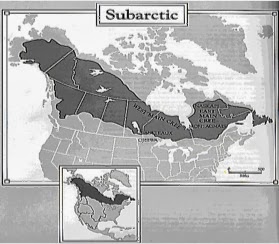Assignment: Blog
Entry for Monday, November 18, 2013 Dan Grigsby
Online resource: In the Light of Reverence
to gain a better understanding of the meaning of place for American Indians. http://www.pbs.org/pov/pov2001/inthelightofreverence/thefilm.html
The filmed documentary titled “In the Light of Reverence”
caught my attention, as I was somewhat involved in a similar project. More and
more these days we see society and “civilization” over taking sacred sites
everywhere in the world. I had an alternative
native music group called “Ghosthorse” and we released a CD called “Ksa” and
the music from that CD, our original music, was used in the sound track of a
short documentary entitled “On Sacred Ground”. It dealt with the same issue of encroachment
on Bear Butt, a Native American sacred site in South Dakota. I recommend you
look it up and watch it, it’s not as big of production as “In the Light of
Reverence” but it is very well done.
There are places that are protected of course put even the
protected sites often become tourist attractions. Just the increase of tourist
traffic defiles these sacred sites in that it generates trash, noise and some
types of activities that are not considered appropriate to those native peoples
that hold those sites to be sacred. The film deals with what they are referring
to as “American struggles to protect landscapes of spiritual significance” and
all though this is an honorable endeavor I have a problem with including these
sites as vacation destinations for thousands of citizens who either don’t
understand their spiritual significance or just don’t respect it. It is very
important that people who visit these places receive some kind of instruction
or education as to what they mean to the indigenous population and how they are
to be considered reverent and holy sites that have thousands of years of
history and ceremony attached to them. The National Parks Service, the
Department of the Interior, the U.S Forest Service and Department of
Agriculture do provide training to their rangers as to provide information to
tourist while they are visiting some of these sites in regards to their importance
and spiritual background but never the less there still exists a serious amount
of disrespect. Just the idea of these federal agencies having some sort of
jurisdiction over these sites is a bit disrespectful to Native Americans,
imagine any of these government agencies having jurisdiction over the Saint Patrick
Cathedral or how about the American Indian Movement (AIM) having jurisdiction
over the Vatican.
The film deals with the concerns and obstacles involved in
what it takes to care for three specific sites by the native communities that
hold them to be sacred. These sacred sites are Devils Tower in Wyoming a Lakota
place of worship, the Hopis’ sacred Four Corners area of the Southwest and in
California Mount Shasta a holy place for the Wintu people. These sites are
threaten by many things that modern American society sees as progress or for
one reason or another as necessary like ski resorts and other so called
recreational destinations or heartless mining projects that leave the land
desecrated and ravaged. Some sites are
destined to be removed from some native communities forever through government
public works projects like the building of dams to provide electricity to near
by non-native communities and cities but some do help as is the case with a
native dam project in Nemaska, Quebec, Canada where the native people while
staying in charge of the project have managed to save sacred sites and improve
their economy while maintaining their sense of ecology. This elates to the on
line resource in mod 3 entitled “In one life journey, the modern history of the
Cree.
Then of course there’s always those who just can’t stop
stealing Indian land. “When they take away our religion they have taken away
everything.” That says it all, the activities that America allows to take place
in and around these sacred sites is inhibiting the native population from
exercising their religious freedom. Even the non-native people who mean well
and want to experience these sacred sites in a spiritual way are actually doing
harm. They create an unwanted traffic in areas that need to remain private an
accessible to Native Americans only. They often trek where they shouldn’t or
unwittingly and perhaps unknowingly desecrate the site in one way or another,
even by being there can deter an devout native person, especially elders, from
accessing the site to pray or perform a sacred ceremony.
I think these web resources were selected to help promote a cultural
interaction as it deals with the indigenous people of North America for the
purpose of generating awareness and understanding. There are links to related
topics and alternate points of view, mostly the governments that make the
information one gets more comprehensive. These recourses are meant to also
promote scholarly research to educate the non-native population about Native
American history, religion and contemporary issues. Being of Blackfoot native
ancestry, on my father’s side, I found the reports in “ In The Light of
Reverence” to be somewhat disturbing but, by the same token, I am glad that
there are those of us, human beings that is, who find it important enough to
dedicate their work and talents to bringing these issues to “light”, no pun
intended.
I have saved the darkest reason that these sites come under
attack and way they don’t get the proper respect and protection, racism. There
are large numbers of non-native peoples who just hate native people for a lot
of different reasons. While researching some related topics for this “first
Peoples of North America” course I came upon this link:
http://www.gcc.ca/pdf/INT000000005.pdf
http://www.gcc.ca/pdf/INT000000005.pdf



